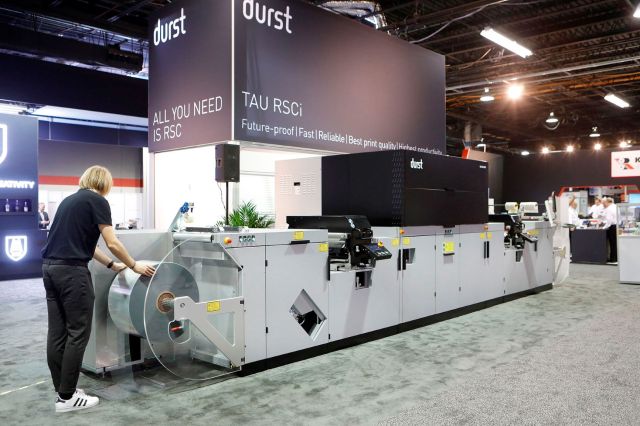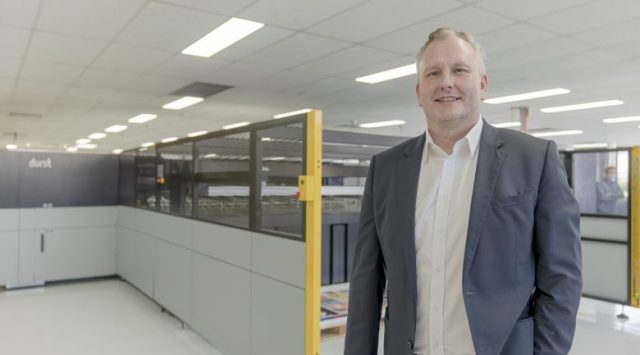
Avery Dennison’s latest report shows that making waste reduction part of a company purpose can benefit the planet, people and the bottom line
Going green is a big selling point for consumers and businesses alike, with many moving
away from companies that don’t share their sustainability values. As people demand demonstrable climate action, there’s an urgent need for brands to respond with more transparent and eco-friendly supply chains that effectively reduce waste.
As such, Avery Dennison conducted a study to better understand the global supply chain waste challenges that companies face and explore the innovative ways these issues are being tackled. It assessed the state of global supply chains, focusing on several core segments – food, beauty, apparel, automotive, healthcare and pharmaceuticals.
The scale of what it uncovered is worth paying attention to. Global organisations are overproducing and exacerbating the supply chain crisis – estimating that on average, eight per cent of their stock perishes or is discarded annually, which is approximately US$163 billion worth of inventory.
The data found that while companies are acutely aware of the problem, they are not yet investing the budget required to fix it.
Of those surveyed, an average of 29 per cent say that their organisation’s overall sustainability impact comes from supply chain operations. However, three quarters of businesses are investing five per cent or less of their technology budget to supply chain sustainability improvement.
With cost and quality being the highest priorities for consumers globally when it comes to buying products, the data has also revealed that sustainability still has a long way to go to make it into customers’ immediate priority lists, with just 16 per cent of consumers putting sustainability in their top three considerations for buying products.
Avery Dennison A/NZ labels and packaging materials commercial director Cath Cornaggia said this is because of a reluctance to change due to brand loyalty, consumers being unable to make informed decisions due to a lack of detailed information on the sustainability of a product, and consumers still thinking that being sustainable will cost more.

“Unfortunately, consumers are mostly still in the mindset that shopping for sustainable products is more costly. While that is true in some cases, and consumers are likely to remain responsible in the current economic climate, eco-friendly options are becoming more competitive in price,” she said.
“Some consumers are also reluctant to make the switch because of brand loyalty. If you have been using a brand for years, and it works well for what you need it for – of course it makes sense that you would stick by that brand. However, as we know, sustainable products produced with the circular economy in mind are built to last, and will save you money in the long run as they will not need replacing as often.
“There is also some confusion for consumers around accurate information. Greenwashing is rife and something we are seeing in the news cycle more and more. The combination of this, and lack of transparency from some businesses, creates a perfect storm where consumers are unable to make informed decisions about a product – for example the carbon footprint, the recyclability and traceability.”
However, the research points to a shift in the desire for durable products, with durability ranked by almost half of global consumers (48 per cent) as a top five concern – suggesting there is an opportunity for businesses to shape the future of sustainability by putting a greater focus on product durability.
Cornaggia said suppliers and manufacturers need to consider durability, recyclability and circularity in the design stage.
“Not only is it necessary to think about recycling and reuse after the product’s end-of-life, but the entire life cycle has to be built into the design from the beginning,” she mentioned.
“Product durability is a key facet of a successful circular economy, and suppliers and manufacturers must consider this at the design stage. This means considering the entire life cycle of a product right from the start and thinking about what will happen to the materials, and how they can be reused or repurposed, after the product’s end of life.
“Here at Avery Dennison, this is exactly what we envision when we consider the future as a ‘regenerative economy’. We look at new products, new technology and alternative supply chains and business models that actively replenish rather than remove from our planet.
“For businesses to drive this change, those further in their journeys must empower others to do so. For this reason, we have created AD Stretch, the first programme in the labels industry aimed at partnering with start-up innovators to solve key challenges and create new opportunities within sustainability, customer experience and value chains.”
Future-proofing the supply chain
According to AD Global Supply Chain Research in 2022, global industries saw supply chain disruptions soar from 3,700 in 2019 to 11,642 in 2021, due to the pandemic and its ongoing impact.
However, with other global challenges such as increasing geopolitical risks, inflationary pressures, labour shortages, spiralling energy and fuel costs, and the impact of climate change on production as well as shipping, manufacturers are bracing themselves for an even more volatile future.
Avery Dennison’s research found that one in five global companies said these global forces are driving supply chain disruption. The increased cost of transportation was said to be the single most disruptive factor impacting supply chain operations.
But consumers still expect businesses to act. The report found that whether it’s for food, fashion or beauty, half of consumers expect sustainable manufacturing and distribution.
New waste-free processes are seen as the top way for businesses to make an impact on addressing climate change, followed closely by the use of sustainable and renewable materials. According to the report, 81 per cent of people believe businesses have a significant role to play in addressing the climate crisis, and 51 per cent say they aren’t acting fast enough.
Avery Dennison said eliminating supply chain waste is key to addressing both the needs of businesses and consumers as effectively navigating volatile demand increases margins, reduces environmental damage and gives businesses an opportunity to divert the recouped losses back into better materials, increased worker wages and investment into corporate social responsibility.
In the process, it also offers an opportunity to build connections with consumers who are looking for ways to close the value-action gap.
“While Australia and New Zealand is ahead of much of the developing world in terms of our sustainability journey, there is still much more businesses can do to ensure future prosperity. The first being matching up environmental, social and governance goals (ESG) with supply chain investment – this can help greatly to reduce waste and improve margins,” Cornaggia said.
“Secondly, boosting the visibility of supply and demand can lead to less waste and foster consumer satisfaction. Visibility and transparency are a key foundation for consumer trust.
“Offering more durable products to consumers not only reduces waste, but addresses their need for affordability and quality – this is key in attracting those consumers who are on the fence about whether to switch from a brand they trust, to a more sustainable one.
“Further to this, educating consumers in a productive way, through transparency, to make waste-free purchases is a win-win situation for all.”
Increase profits and benefit the environment
In the midst of the climate crisis, Avery Dennison has identified that many businesses have adopted solutions and initiatives to curb their environmental impact – 67 per cent are using more sustainable materials (such as recycled materials or lower emitting products) and 66 per cent are increasing the efficiency of energy use (for instance, improving the energy efficiency of buildings).
According to Cornaggia, businesses should be investing in technologies that can improve visibility across their supply chains to clearly identify where products are sourced (transparency) and reduce overproduction by ensuring inventory levels more closely matches consumer demand.

“Investing in technologies that can improve visibility across supply chains is extremely beneficial. Utilising technology to identify where products are sourced fosters transparency, and can also reduce overproduction by ensuring inventory levels reflects consumer demands – ultimately driving less waste reduction while also providing the grounds for increasing consumer loyalty,” she said.
In addition, she said adopting RFID or sustainability minimises unnecessary labour (digital track and trace), ensures safety (minimised labour translates to less physical work, therefore reduced accidents), and creates less waste.

“At Avery Dennison we use atma.io to help track the environmental footprint of an item by creating a digital twin that is trackable online. atma.io is a platform that unlocks the power of connected products by assigning unique digital IDs to everyday items, providing unparalleled end-to-end transparency by tracking, storing and managing all the events associated with each individual product — from source to consumer and beyond to enable circularity,” she mentioned.
Improved inventory visibility is another way that Cornaggia said reduces waste and keeps items in stock for customers as the report identified that an average of 3.4 per cent of inventory, amounting to US$64.5 billion, is wasted per year due to overproduction.
“Improved inventory visibility helps track items that are lost and ensures vendors are only ordering what is necessary at the time and prevents overproduction. For example, with food and beauty products, having visibility to products sitting in inventory that are about to expire ensures these items can be sold rather than disposed of,” she said.
“It is also a win for consumers – knowing which stores have what inventory items ensures that they can access real time, accurate information and can find their products.”
But keeping on top of distribution and inventory tracking end-to-end is no easy task. Better visibility requires enabling supply chain practitioners to improve their forecasting accuracy and pinpoint the optimal amount of stock for their business; enough to prevent consumers from experiencing scarcity of essential items and not so much that it leads to excess waste.
To enable more visible supply chains, Cornaggia said companies should work towards assigning unique IDs to their products either at the pallet, case or item level.
“We believe that RFID tagging these products presents the most effective solution to increasing supply chain visibility,” she said.
“RFID technology enables much faster and more efficient and accurate item level tracking with hundreds of items being able to be read accurately at checkpoints across the supply chain within seconds (without direct line of sight to the product on the pallet or in the carton).
“Avery Dennison and our partners can support the necessary infrastructure (hardware and software) and suitable RFID tags to enable near real time visibility of their products across their supply chain. Typically, we would start with a small pilot to help demonstrate and validate the benefits of RFID before rolling out across their sites.”
Five key opportunities to reduce waste now
- Money talks – Matching up environmental, social and governance (ESG) goals with supply chain investment can help reduce waste and improve margins.
- Balance the stock – Boosting the visibility of supply and demand can lead to less waste and more contented consumers.
- Considerate consumption – Offering more durable products to consumers not only reduces waste but also addresses their need for affordability and quality.
- Trust in data – Transparency in the supply chain can help to reduce waste and profit loss caused by damage and strengthen partner and consumer trust.
- Human truths – Helping consumers make waste-free purchasing choices through education and transparency.
Key takeaways to minimise waste
- Item-level visibility of inventory end-to-end negates the need for safety stocks: Overproduction occurs due to a lack of clarity on the amount of stock already being produced, distributed and purchased. Therefore, item-level visibility and accurate forecasting can provide this clarity and prevent problems before they occur.
- Consumers need reassurance and open communication about the availability of goods: Consumers don’t like feeling the effects of scarcity or low stock levels, they want reassurance that they can get their hands on the essential items they need day-to-day. Food companies especially should aim to dial up reassurance when communicating with customers due to scarcity fears being strongest in this category.
- With supply chain visibility brands can better implement FIFO policies: The world continues to be intricately interconnected by the global supply chain. While demand volatility is impossible to eliminate, it is possible to manage. With greater stock visibility, brands can better implement “first-in, first-out” (FIFO) policies – meeting consumer desires for reduced waste, while maintaining levels of stock that can cater to unforeseen disruption.





